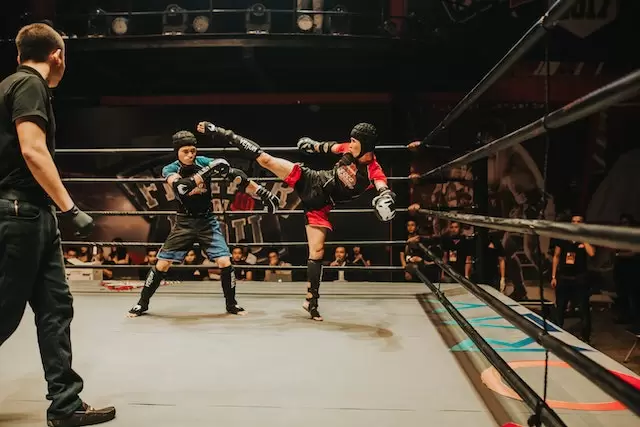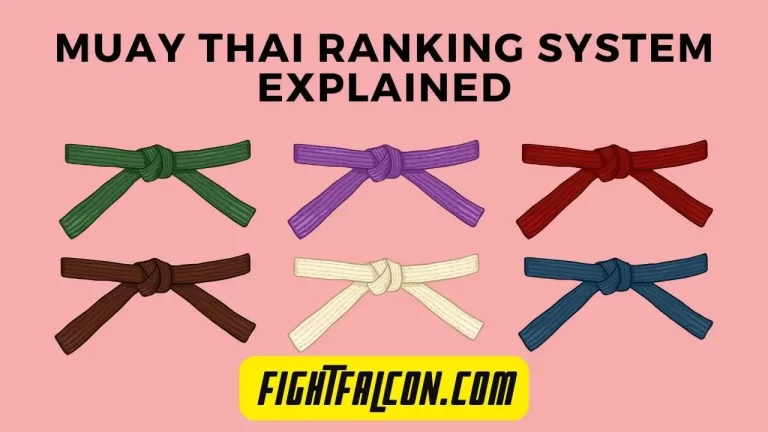Dutch Kickboxing vs. Muay Thai | What is the Difference?
If you’re a fan of martial arts, then chances are you’ve heard of Dutch kickboxing and Muay Thai. Although the two fighting styles share similarities, there are also some important differences regarding their history, techniques, and effectiveness in combat.
The difference between Dutch kickboxing vs. Muay Thai is; Dutch kickboxing emphasizes powerful kicks combined with heavy punches and solid defense techniques. In contrast, Muay Thai combines elements from other martial arts, such as karate, judo, jujitsu, and even wrestling, into an effective close-combat system.
Let’s take a closer look at the two styles and how they compare so that you can decide which one may be best for your training.
Comparing Muay Thai To Dutch Kickboxing

History of Dutch Kickboxing and Muay Thai
Dutch kickboxing is a martial art developed in the Netherlands in the 1970s. It combines Muay Thai, karate, judo, boxing, and other martial arts elements.
The style is characterized by an emphasis on powerful kicks combined with heavy punches and solid defense techniques. The idea behind Dutch kickboxing was to create a “complete” martial art that could be used offensively and defensively.
Today, it is practiced worldwide as both a sport and a self-defense system.
Muay Thai is much older than Dutch kickboxing; it dates back to the 16th century in Thailand (formerly Siam). It combines elements from other martial arts, such as karate, judo, jujitsu, and even wrestling, into an effective close-combat system.
Muay Thai fighters use powerful kicks, punches, and knees; they also use elbows to add extra power to their strikes. Uniquely among martial arts systems, Muay Thai also allows combatants to grapple each other while standing up, making it more effective at close range than most other fighting styles.
Techniques Difference Between Dutch Kickboxing vs. Muay Thai

Dutch Kickboxing Techniques
As mentioned earlier, Dutch kickboxing features powerful kicks combined with punches aimed at vital points on an opponent’s body, although leg sweeps can also be used in this style.
In addition to their offensive techniques, Dutch kickboxers also use defensive maneuvers such as blocking or slipping away from strikes thrown by opponents; they often use their hands or arms.
They also employ footwork strategies such as circling opponents or swiftly changing directions to avoid strikes or set up counterattacks.
Muay Thai Techniques
Muay Thai differs from Dutch kickboxing in several ways, most notably its use of elbow strikes instead of punches.
Fighters often throw elbows during close-range clashes rather than punches due to their devastating effect on an opponent’s body. They can often cause severe damage if landed correctly on vulnerable points such as the face or neck.
In addition to elbow strikes, Muay Thai fighters will also use knee strikes which are particularly effective against opponents who have been knocked down onto their back or side by previous attacks.
Both grappling moves (clinching) and ground fighting (submission holds) are allowed under Muay Thai rules, which makes it more versatile than many other forms of combat sports in self-defense scenarios.
A Comprehensive Guide to Dutch Kickboxing

For many, kickboxing is a great way to stay fit and learn self-defense. Now I’ll look at Dutch kickboxing, including its stance and whether it is good for self-defense.
What is Dutch Kickboxing?
Dutch Kickboxing, also known as “k-1” style kickboxing, was developed in Holland in the 1970s by Anton Geesink. It blends traditional martial arts such as karate, judo, and taekwondo mixed with Western boxing elements like footwork and punching technique.
The goal of the sport is to score points by striking one’s opponent with punches and kicks while avoiding being hit oneself. It has become popular worldwide due to its focus on safety while still providing an intense workout.
Dutch Kickboxing Stance
The foundation of Dutch Kickboxing lies in its distinctive stance. Unlike other martial arts styles that typically involve standing straight up or leaning forward slightly, Dutch Kickboxing utilizes a more relaxed posture known as the “Dutch Guard.”
This guard involves keeping your hands slightly up on either side of your face with your elbows tucked close to your body. Your feet should be shoulder-width apart with one leg slightly ahead of the other; this allows you to move quickly in any direction if necessary.
Is Dutch Kickboxing Good for Self-Defense?
Yes! The techniques used in Dutch Kickboxing are designed for maximum efficiency and effectiveness when defending yourself against attackers.
You can learn how to block punches and kicks from assailants with proper training. At the same time, delivering powerful strikes without compromising safety or putting yourself at risk of injury or legal repercussions.
Additionally, since it focuses on technique rather than strength, even those physically weaker can benefit from learning Dutch Kickboxing for self-defense.
Watch Experts Opinion: Dutch Kickboxing vs. Muay Thai
Difference Between Japanese vs. Dutch Kickboxing
While both styles are closely related, some key differences should be noted before deciding which style best suits you.
Japanese kickboxing emphasizes power above all else. Which means it often relies on brute force rather than technique or strategy. In contrast, dutch kickboxing focuses more on technique and finesse.
Japanese kickboxers fight more aggressively, whereas dutch fighters prefer precision over raw aggression.
Lastly, Japanese fighters usually wear gloves, but Dutch fighters do not. This allows them more mobility with their hands when blocking incoming strikes from their opponents.
Is Muay Thai Kickboxing?
Muay Thai Kickboxing combines Muay Thai and Kickboxing techniques that focus on striking techniques, including punches, kicks, and elbow strikes, with elements of clinching and groundwork.
History of Muay Thai Kickboxing
Muay Thai Kickboxing dates back to the ancient times of Muay Boran, a combat style used by the Siamese militia. In the 19th century, Muay Boran began to transition into a sport practiced in matches between fighters from different regions.
Rules and regulations were established, and gloves and hand wraps became mandatory. In the 1940s, Muay Thai became popularized in Bangkok and has since spread worldwide.
Techniques of Muay Thai Kickboxing
There are a variety of techniques used in Muay Thai, and it takes years of practice to master them all. Some basic techniques include punches, kicks, knee strikes, and elbow strikes.
Footwork is also important in Muay Thai, as fighters need to be quick on their feet to avoid their opponents’ attacks while striking. Clinching is another technique used in Muay Thai, which can be used to throw or takedown an opponent.
Benefits of Muay Thai Kickboxing
Muay Thai Kickboxing has numerous benefits for individuals who practice it regularly. It improves cardiovascular health, promotes weight loss, and increases muscle strength and endurance.
Practicing Muay Thai can also improve reflexes and mental sharpness, as fighting requires quick thinking and decision-making.
Furthermore, Muay Thai can boost confidence and self-esteem by providing physical and mental challenges that can be overcome through training.
Training and Safety
Training for Muay Thai Kickboxing requires dedication and discipline. A beginner should start with basic techniques and gradually increase their intensity and complexity. It is important to have a qualified instructor, particularly for sparring sessions, which are essential to training.
Proper equipment, including gloves and hand wraps, should always be worn during training and competition to prevent injuries.
Conclusion
Dutch kickboxing and Muay Thai have unique advantages that make them appealing for different reasons.
While both styles feature powerful strikes aimed at vital points on an opponent’s body and defensive maneuvers designed for evasion/blocking techniques, each style has distinct advantages that may appeal more strongly depending on the kind of fighter you seek.
Dutch Kickboxing is good for you if you prefer using powerful kicks combined with punches. In contrast, Muay Thai suits your needs better if you love elbow & knee strikes and grappling/ground fighting options.
With this information, I hope you know enough about these two unique styles to decide which is best for your training goals.
Related Articles:
- What is the difference Between Kickboxing vs. Jiu-Jitsu? Basics & Rules
- Kickboxing Vs. Karate – Difference in Basics, Goals & Rules
- What is the Difference Between Kickboxing Vs Taekwondo?
- Kickboxing Vs. Boxing – Which is Better & Who Will Win?
- Kickboxing Vs. MMA | What’s the Difference? Which is Better?






